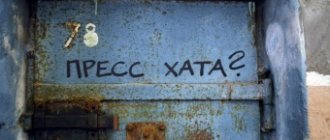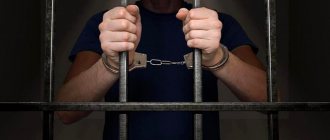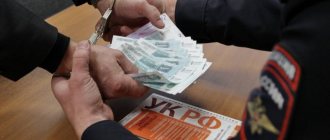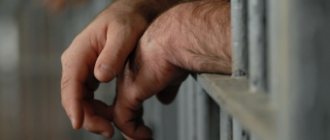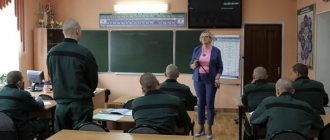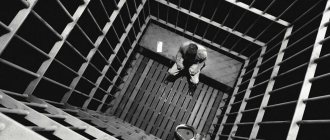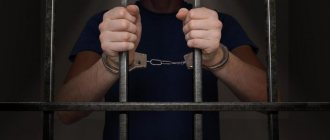Even those who have never been detained in penal institutions have heard about press huts. Every now and then there are reports in the media that a press hut has been discovered in one or another detention center. At the same time, the regional Federal Penitentiary Service always finds a million evidence of the absence of press huts, and then members of the corrupt PSC appear, ready to confirm that the convicts in the next video fought over cigarettes. ZNBM.ru answers one of the popular questions from readers of our channel in Yandex.Zen - what is a press hut in prison.
What is a press hut in prison?
A press hut is a cell into which undesirable convicts are sent in order to be put in their place or to extract the necessary testimony. Despite the fact that press huts also exist in the zone (in colonies), this phenomenon is mainly associated with pre-trial detention centers - pre-trial detention centers.
A press hut in a prison is a phenomenon that is impossible without the support of the administration of the institution. Usually this is a small cell in which physically strong convicts are kept (usually for serious crimes - brutal murders, cannibalism, and so on), who have entered into an agreement with the management of the detention center.
At the right moment, the unwanted convict is transferred to the press hut, after which the inhabitants of the cell carry out educational work with him. For some reason, the in-camera video recorder stops working, and the operative on duty suddenly becomes hard of hearing.
History of creation
The appearance of press cameras is associated with the success of Leica “film” cameras, which fundamentally changed ideas about reportage photography and the limits of photojournalism[1]. The quality of photographic emulsions of the 1930s made it possible to obtain an image on a small-format negative of sufficient quality for newspaper printing, but the resolution was insufficient for magazines. At the same time, the shooting techniques available for the Leica remained unacceptable for conventional large-format equipment. The solution was press cameras, which were widely used from the 1930s to the early 1960s. Cameras of this type were suitable for classical shooting technology with framing and focusing on ground glass, like pavilion and road cameras. Improvements consisted of the appearance of a telescopic viewfinder and rangefinder for quick focusing and framing without removing the cassette. As a result, it became possible to shoot with a press camera handheld in the same way as with a Leica. The only difference was the speed of reloading: while the Leika only needed to turn the crown to change frames, the press cameras required changing the cassette. Over time, instead of single and double cassettes, a “filmpack” for 8 or 10 pictures appeared, and then roller film. Over several decades of improvement, press cameras have made a great contribution to the development of the concept of “systematic” photographic equipment.
Why are press huts needed in prison?
Basically, press huts in prison are used for three things:
- Take out the necessary readings;
- Punish especially zealous defendants (“break”);
- Extort money.
In general, the Russian Criminal Procedure Code (Criminal Procedure Code of the Russian Federation) lays down the principles of division of responsibility - one department (police) detains a person, another (Investigative Committee) conducts the investigation, and contains a third (FSIN). As planned, there are still prosecutors who supervise all this, and judges who administer justice.
In fact, all these organs are intertwined and work together. Police investigators probe a person, collect information and understand his weak points, investigators sew a case, FSI officers extract the necessary testimony, and judges finalize what is happening, sending the person to prison without any special proceedings.
Justice in Russian is when at trial a person is given a sentence that, after recalculation, coincides with the period served in a pre-trial detention center. It turns out that the person is released, but is not acquitted. A criminal record does not count, which is why most of these convicts do not try to defend their rights and demand compensation. They are simply in a hurry to return to ordinary, normal (free) life.
How do they extract testimony in press huts?
Testimony is taken in two situations.
The first is when a person is guilty and tries to “move out”, and the investigator cannot do his job properly and substantiate the accusation.
The second is when a person is not guilty, but the case was “fixed” on him. The investigator in this situation, as a rule, either wants to put a tick in the statistics, or close an inconvenient “hanging fruit” - a case that cannot be solved using traditional methods, but it hangs under the control of one of the bosses.
In both situations, testimony will be forced out of the person. Most likely, he will come out of the press hut either admitting guilt, or lowered, or feet first. Sometimes the person under investigation manages to pay off - in this case, money needs to be given not only to the inhabitants of the press hut, but also to the employees of the institution, and often to the investigator.
How and why do they break things in the press house?
Inconvenient defendants may be sent to the press hut to be “broken.” As a rule, we are talking about particularly zealous advocates of human rights, causing inconvenience to the management of the pre-trial detention center, demanding to call the supervising prosecutor, writing complaints to public figures, and so on.
If such a passenger is sent to the press hut, the task of the torture chamber workers is to put the person in his place and explain how to behave so as not to cause inconvenience to the administration.
How do they break in press huts? Depends on the “client” - it’s enough to scare someone, threaten to disseminate some information, promise to let them down or cause injury. Someone is beaten, someone is tied to a bed (“bunk”) and left in this form for a long time (sometimes a week or more). They can be hung from the chamber grille or from the ceiling. Popular torture and sleep deprivation. A team of bulls takes turns guarding the victim, preventing him from falling asleep for several days. Experienced inmates remember such torture with horror.
They also break you psychologically - with threats, vulgar discussions of relatives (usually women) with details of sexual pleasures with them. Often entering the press hut is accompanied by the imposition of illegal restrictions by the administration. For example, the convict may be limited in delivery, prohibited from visiting, reduced food rations, not given water, or not provided with medical care.
Extortion of money in press huts
Extortion of money is another common activity of press huts. If the administration becomes aware that one of the defendants has money, he can be transferred to the press hut. The forceful or psychological influence of strong men helps the passenger to part with money more easily.
Often funds are shamelessly transferred directly to the personal cards of detention center employees. Divorced people under investigation rarely complain - they worry about their lives and their loved ones. We know of at least several cases when money was transferred “to Sberbank” to BORs - deputy heads of pre-trial detention centers for security and operational work. The editors have no doubt that both the chiefs and representatives of the regional departments of the FSIN have a share.
Differences from other types of photographic equipment
Press cameras had the ability to focus and frame not only using frosted glass, which was replaced with a cassette before shooting, but also using telescopic and frame viewfinders, which were absent in other large-format cameras.
This increased the efficiency of shooting, allowing you to take photographs immediately after framing with the cassette already installed. At the same time, traditional frosted glass made press cameras versatile and suitable for most applications, including conventional studio photography, technical photography and reproduction. For the latter, the cameras were equipped with a “double stretch” focusing bellows, allowing macro photography at a 1:1 scale. In addition, such fur made it possible to use not only wide-angle and normal, but also long-focus interchangeable lenses. A characteristic feature of most press cameras was the presence of two shutters: central and focal [2]. The focal length shutter expanded the possibilities of using interchangeable lenses, including especially high-aperture lenses, which were of little use for installing a central shutter. At the same time, shutter speeds shorter than 1/500 of a second became available, which were not possible with central shutters. When shooting with flash, central shutters were more advantageous, providing an unlimited synchronization range. In this case, the focal shutter was fixed in the open state, as was the central shutter when the focal shutter was operating. Typical examples of press cameras with two shutters are the “Speed Graphic” line of American Graflex cameras and the “Zweiverschluss” (“two shutter”) model of the German company Ihagee[2]. A traditional addition to the press camera was a “flashgun” - a photoflash with a large round reflector, designed for disposable photoballoons. In feature films, a press camera with a flashgun is traditionally a symbol of photojournalism of the 1940s and 1950s[3].
The most common frame size for American press cameras was 4x5 inches. Before World War II, the 5x7-inch format was popular and became obsolete in the early 1940s. At the same time, European manufacturers Goerz and Van Neck produced press cameras with a 9x12 centimeter frame, slightly reduced compared to the “American” 4x5 format. The photographic material used was mainly photographic plates or sheet film of this format. After the war, plate press cameras in the 6x8 and 8.5x11 centimeter formats began to dominate the market, and, to a greater extent, those designed for roll film with a frame from 6x6 to 6x12 centimeters. With the spread of instant photography for most press cameras, the production of backs for sheet or roll photo kits of the one-step Polaroid process was launched.
Compared to “travel” large format cameras with a frame size of 8x10 inches or larger, press cameras had a smaller format and a limited number of movements. At the same time, even medium format press cameras are superior in functionality to similar SLR cameras due to the available perspective correction. Larger format press cameras produce very high quality images with virtually imperceptible grain and rich midtones. Currently, press cameras continue to be used by street photography and instant photography enthusiasts, as well as photo artists, as a cheaper alternative to studio and portable large-format cameras[4][5].
By the mid-1960s, press cameras lost their popularity, giving way to SLR cameras: medium format Rolleiflex and small format Nikon F. Due to the increase in the quality and resolution of photographic materials, build editors of newspapers and magazines eventually recognized the use of 35 mm film as acceptable . Small-format cameras made it possible to use higher-aperture optics than large-format press cameras, and the compactness and lightness of small-format equipment made it easier to transport during business trips and expeditions. The supply of portable photographic material increased sharply: now the same volume was occupied by several hundred frames instead of 10-20 double large-format cassettes.
Why are press huts possible in prisons?
Unfortunately, the most reasonable answer is because we are in Russia . The rule of law in our country still exists only on paper and in the fictional world of officials. In fact, the one who has more rights is right. Those under investigation, of course, have no rights. Their detention deprived them of even the most basic human right – the right to freedom of movement.
Feeling their strength, the employees of pre-trial detention centers and camps indulge in excess, take advantage of permissiveness and the opportunity to hide their actions behind the iron doors and brick walls of the detention centers. This is a closed zone, and what happens there is a secret, covered with a thick layer of lies from all participants in the process. Almost hothouse conditions for abuse of power.
Permissiveness is also felt by those under investigation (and more often, those already convicted) who “work” in the press huts. The prisoners treat them with contempt, calling such people “woolies” or simply “wool.”
Who are the woollies in prison?
As mentioned above, “woolen” (or simply “wool”) are those prisoners who “work” in the press hut. Other names are also in use - “bulls”, “shaggy” (or even “shaggy” - with a hint of orientation).
As a rule, prisoners treat sextons with disdain. In some institutions (in the “blacker” prisons) it is even worse than in the lower prisons.
Typically, “bulls” are physically strong (often outwardly scary) convicts who are afraid of being transferred to a regular cell or being sent “to the zone.” Such people feel some kind of mistakes behind them - usually associated either with the wrong orientation, or having close relationships with organs. In ordinary huts, on stages and in colonies, these people will face retribution for what they have done. So they decide to stay in prison.
If the “woolen one” does end up in a colony, a rather difficult life awaits him. Often such convicts are forcefully given appropriate tattoos, by which they are easily recognized in any institution. There are known cases when former cellmates, marked in this way, were found free and killed.
As a rule, a whole team works in a press hut - there is a foreman and several of his subordinates. But solitary torture chambers also happen. Often the temporary press hut becomes a punishment cell (or even a “glass”), where the victim is transferred at the same time as the bull. At the same time, the employees of the institution are distracted, and the video recording cameras begin to act up.
In the pre-trial detention center, the woollens live well - they often have telephones, the employees of the operational unit bring them food, drinks, sometimes give them drugs (for good work) or even bring them women. Searches of bulls and searches (“shmonas”) in press huts also happen infrequently and are carried out formally.
Key manufacturers of press chambers
- Linhof Super Technika
- Technika Press
- Press 70
- Speed Graphic - classic American press camera
- Koni Omega
- Mamiya Press
- Topcon Horseman
LitLife
Khabarov Alexander
Russia cop
Khabarov A.
Russia cop
Announcement
This book is a brutal account of many outrageous crimes committed and being committed today by those who are called upon to fight crime. Many people break the law - simple “cops”, officers and ministers. On the pages of “Russia of the Cops”, victims, eyewitnesses, experts, as well as many documents testify to the “lawlessness” that “guardians of order” sometimes create.
START
Don’t be surprised when brave fellows in camouflage, for no apparent reason, sniffing intensely, demand your documents. Don’t be surprised when, due to the lack of what you need and the presence of some special smell, you are still taken to the department in a barred and uncomfortable “bobby” cabin. Do not be surprised when, in response to a legitimate (it seems to you!) disturbance in the area of the kidneys or liver, you suddenly experience acute pain. This is not nephritis, colitis or cirrhosis. It was you who came into contact with a black, heavy club (popularly aptly called a democratizer). In a few more minutes you will already be sitting, if you're lucky, behind glass or bars so-called. “aquarium” (“TV”), and if you’re unlucky, then in a cramped cell in a temporary holding facility, still called a bullpen. However, the matter may not end with a baton: it is quite possible that with the help of handcuffs they will fasten your right leg to your left arm (or vice versa). You may simply not like you: then they will “twist” you for a long time and tediously: asking where you were then and then, why you are carrying this and that. An impressionable citizen can very quickly be brought to the required condition, so that he will definitely confess to some crime committed. How can one not admit it, if you are sitting on a chair behind which there is a powerful steel safe, and when you and the chair are unexpectedly pushed, the back of your head will definitely hit the safe - and so more than once... There are countless ways to make a person talk, this is evidenced by centuries-old experience of Russian investigative bodies - from His Majesty's secret offices and detective orders to the investigative apparatus of the NKVD - Ministry of Internal Affairs and OGPU - KGB - FSB. Naturally, the law does not officially allow (unlike the times of the secret offices) the use of torture against those being interrogated, but often this prohibition is violated, ending very sadly for them, even with death. Only in films about Colonel Zorin does the criminal confess, unable to withstand the pressure of irrefutable evidence of his guilt: they say, you took it, boss. In reality everything is different. But, refuting the well-known saying that a fish rots from the head, there is still a fact: this fish (police) rots in different places. Signs of decay are found both in the head and in the “scales” and tails. Selfless detectives, local police officers and criminologists coexist in the police environment next to the real criminals. And this began in a historically distant time, little known to us, and as a phenomenon it was determined, perhaps, with a series of scandalous cases that thundered throughout the country.
"NOBLE" COLLEAGUES
Major Krymov works in one of the capital's branches of the RUOP - there is no need to decipher this abbreviation, which denotes the legalized fight against organized crime. All citizens have long been accustomed to all sorts of SOBR, OMON, RUOP, OBSDON and other formations that continue to arise out of nothing with the wave of an imperious magic wand. However, RUOP was apparently necessary, because the criminal world reached the highest point of consolidation simultaneously with internal contradictions.
On December 20, 1995, Krymov was returning from his next assignment: they were taking on the center of the lawlessness Hook. The hook put up resistance, managed to jump into the “nine” with the dazed lady and rush along Aviamotornaya towards Entuziastov Highway. At the very end of the street, Krymov, in a figure eight (with a rotary engine), caught up with the lawless man and shot through the open window at the rear wheels. “Nine” started to drift on the ice and capsized; the lady fell on Hook and made him unable to move. Then Krymov and his comrades arrived in time: they took the lady off the bandit and pulled them both out of the car. Hook, of course, got a bit of it from his “comrades” - and from the lady.
Now Krymov, having handed Kryuchok over to the temporary detention center and celebrating his safe detention with his friends, was returning home. The street at the very end of which he lived was dark and empty.
However, suddenly the barely audible whirring of a car engine was heard from behind. The major looked back and saw that a police UAZ was slowly moving behind him. Krymov turned around and waved his hand friendly in the headlights. The UAZ increased speed and stopped near the major. Two policemen jumped out of the cab: one with a machine gun, the other with a baton.
- Well, what's the rush, huh? — the machine gunner said lazily, stroking the barrel.
“They took him for a drunk,” Krymov immediately realized. “Nothing, we’ll figure it out now...” (He swayed slightly, but not from a small dose of alcohol, but rather from fatigue.)
Krymov reached into his jacket pocket for his ID, but, to his surprise, found nothing there. Suddenly I remembered that I left Xiva in camouflage.
- Guys, everything is fine! - for some reason he said.
- What’s normal, wolf? — the machine gunner was surprised. - Do you have a document?
- No, I left it at the department... I live nearby, in that house over there.
... Krymov lost his vigilance (after all, he was not on duty) and did not pay attention to the second one with the baton. He was already behind, and a moment later he grabbed Krymov’s throat with this baton.
Krymov saw a starry sky before his eyes: the stars were getting bigger and bigger, one of them blurred into a fiery spot that fell on Krymov and burned out his memory.
The major woke up in the bushes. It was as if his right hand did not exist; he could neither move his fingers nor bend it at the elbow. My head was buzzing like a cast iron cauldron. It was as if there were no legs at all - it turned out that Krymov’s jeans and jacket had been taken off; So they didn’t bother themselves with checking their pockets...
The major felt his head: it felt wet and sticky. He glanced at his hand: blood. “It’s good that I left the documents in the department,” Krymov thought for some reason, not even realizing that, perhaps, with the documents he would not have gotten into such a situation...
Somehow, staggering, in a T-shirt and swimming trunks, he made his way out onto the street, the name of which he read on the sign of a nearby building. To get to the Krymov house itself, it was necessary to travel five or six stops by bus, but the time, apparently, was later. The major wanted to clarify the time, but, of course, there was no watch, only the feeling of a metal bracelet remained on his wrist. And the watch was expensive: it was officially presented by a famous banker, rescued by Major Krymov’s group from one bad apartment, where he, handcuffed to a heating radiator, was slowly killed by some Caucasians, demanding 700 thousand dollars for his release. Krymov and the guys burst into the apartment, blowing up the door along with the frame. The major personally, still in the hallway, shot two militants who did not even have time to take up their machine guns - by the way, they were exactly the same as those used by the Crimean soldiers...
In general, there were no hours. However, the bus trip, Krymov decided, could end in a new unpleasant episode. This was already too much: tomorrow, with a bloody nose, it was necessary to be in ambush on Myasnitskaya.
Somehow through the courtyards, hiding from belated passers-by, he finally reached his home. I had to call: the keys were also left in the jacket. His wife Larisa, who opened the door, was not at all surprised by the appearance of Krymov in a negligee. She immediately showed him his jacket, jeans, watch and even money. She explained that the doorbell rang, and when she opened it, she saw a voluminous package on the threshold, which contained all the clothing. It was about twenty minutes ago, she, of course, had time to worry and even called Krymov at the service: Ruop’s car had left, it would apparently be here soon...
Indeed, while Larisa was washing Krymova’s wound, her colleagues arrived. Captain Simkov immediately contacted all local departments and found out the names of the patrolmen who were on duty that night...
Notes
- Photocourier, 2005, p. 10.
- ↑ 12
[graflex.org/speed-graphic/ The Graflex Speed Graphic FAQ] Graflex. Retrieved December 19, 2015. - Vladimir Zverev.
[digicam.ru/authors/evolyuciya_fotovspyshek_poltora_veka_puti/ The evolution of flashbulbs.
One and a half centuries of journey] (Russian). Author's articles
. Digital Camera (July 31, 2012). Retrieved December 11, 2015. - KERRI MACDONALD.
[lens.blogs.nytimes.com/2010/01/05/must-33/?_php=true&_type=blogs&_r=0 Must See: He Kept His Speed Graphic] (English).
Photography, Video and Visual Journalism
. Lens (5 January 2010). Retrieved April 26, 2014. - [www.nytimes.com/slideshow/2010/01/03/nyregion/20100103polaroid_index.html Polaroid Photographer] (English). The New York Times. Retrieved April 26, 2014.
